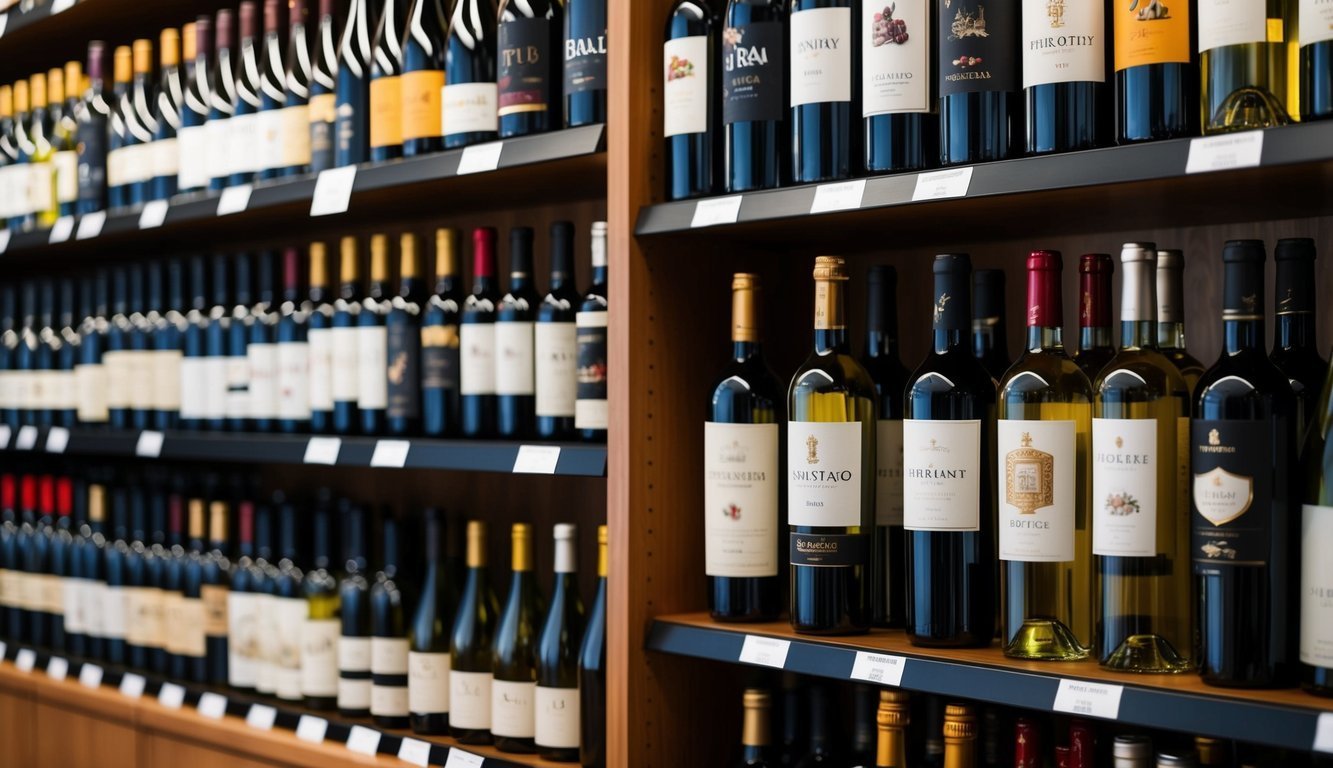Wine lovers often dream of sipping prestigious bottles with legendary reputations, but the price tags can be truly eye-watering.
Fortunately, you don’t need to break the bank to enjoy top-quality vino.
There are plenty of excellent alternatives that offer similar flavors and experiences at a fraction of the cost.
By exploring cheeky alternatives to outrageously priced wines, you can discover hidden gems that satisfy your palate without emptying your wallet.
Whether you’re craving a bold Bordeaux or a silky Burgundy, savvy choices abound for the budget-conscious wine enthusiast.
Get ready to uncover some delicious secrets that will have you toasting to both great taste and great value.
1) Château Margaux, 2015
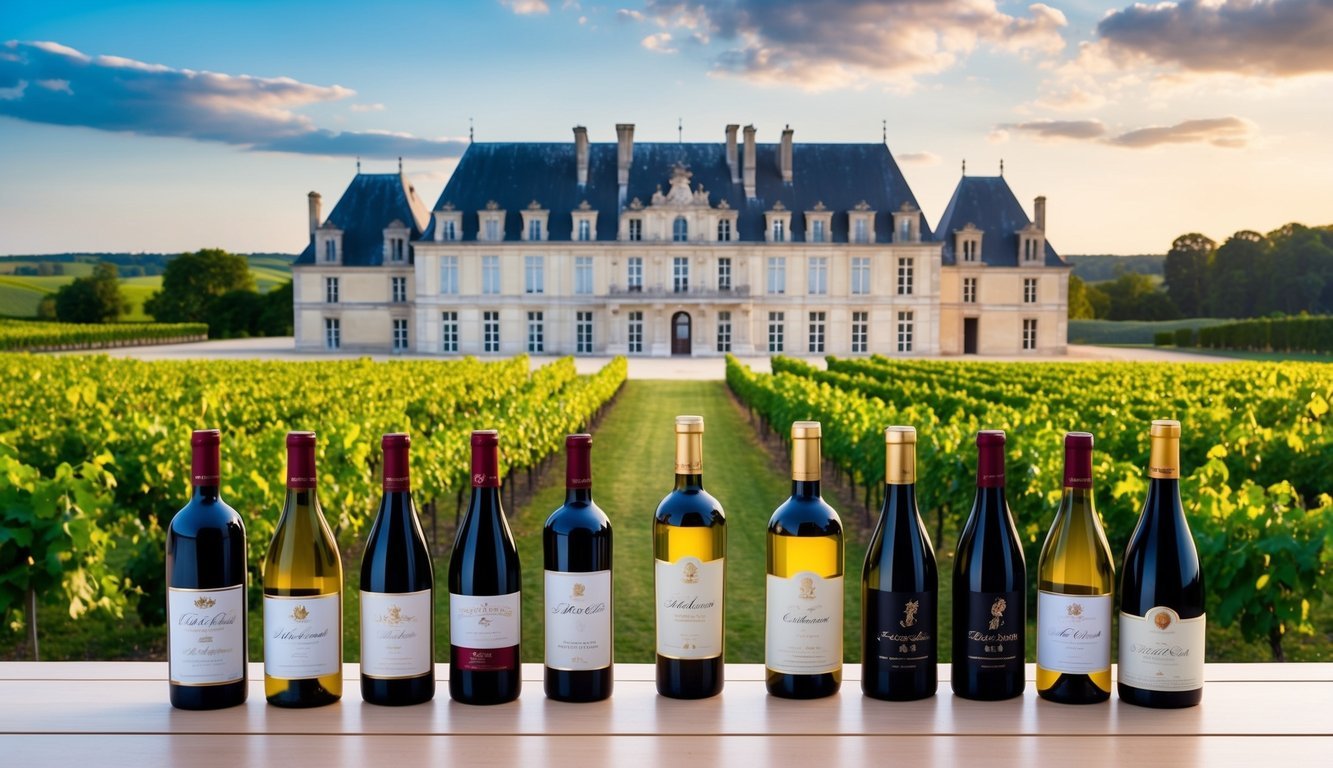
You’ve probably heard of Château Margaux, one of Bordeaux’s most prestigious wine estates.
The 2015 vintage is particularly special, marking the bicentenary of the estate’s buildings.
This wine is a true masterpiece, boasting deep ruby color and an exquisite aroma.
It’s packed with flavors of black cherries, spring flowers, and licorice.
Critics rave about the 2015 Château Margaux, awarding it high scores.
It’s considered one of the best wines from the Margaux appellation that year.
Now, here’s the kicker: a bottle of this liquid gold will set you back around $1,794.
That’s right, nearly two grand for 750ml of wine!
But don’t despair if you’re on a budget.
You can still get a taste of Margaux magic with the estate’s second wine, Pavillon Rouge.
It’s made from the same vineyards and offers similar quality at a fraction of the price.
Or try the 2015 d’Arsac, a more wallet-friendly Margaux option.
It’s fresh, medium-bodied, and has lovely cassis and spice notes.
2) Yellow Tail Chardonnay
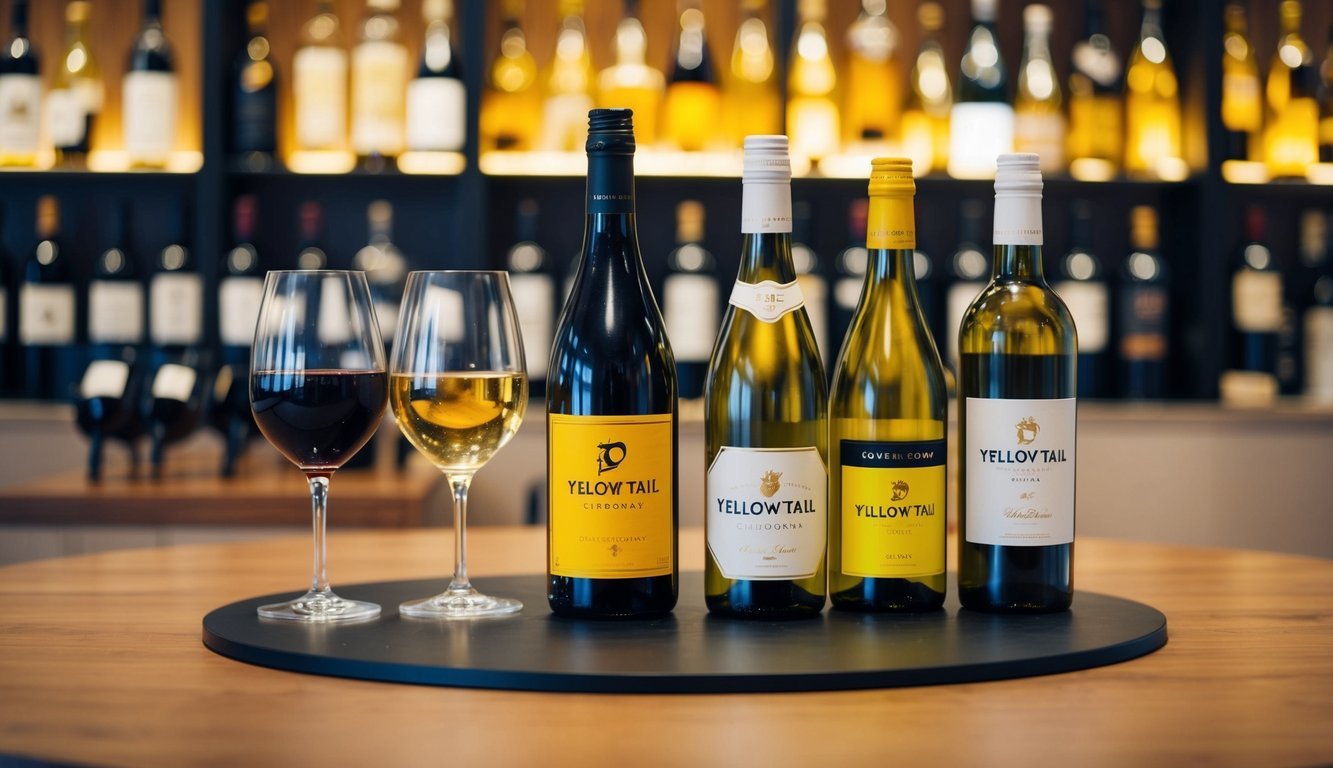
Looking for a budget-friendly wine that won’t break the bank? Yellow Tail Chardonnay might be just what you need.
This Australian wine has been pleasing palates since the Casella family started their winemaking journey in 1957.
You’ll find Yellow Tail Chardonnay easy to spot on store shelves with its distinctive kangaroo label and brackets around the name.
The best part? You can usually snag a bottle for around $5 to $8.
This Chardonnay offers a taste of ripe stone fruits with hints of vanilla and spice.
It’s a medium-bodied wine that’s perfect for casual sipping or pairing with light meals.
Don’t let the low price fool you.
Yellow Tail has consistently produced enjoyable wines that punch above their weight class.
You might be surprised by the quality you’re getting for such a modest price tag.
Whether you’re hosting a party or just want a go-to weeknight wine, Yellow Tail Chardonnay is a solid choice.
It’s proof that you don’t need to spend a fortune to enjoy a decent glass of wine.
3) Domaine de la Romanée-Conti Grand Cru, 2018
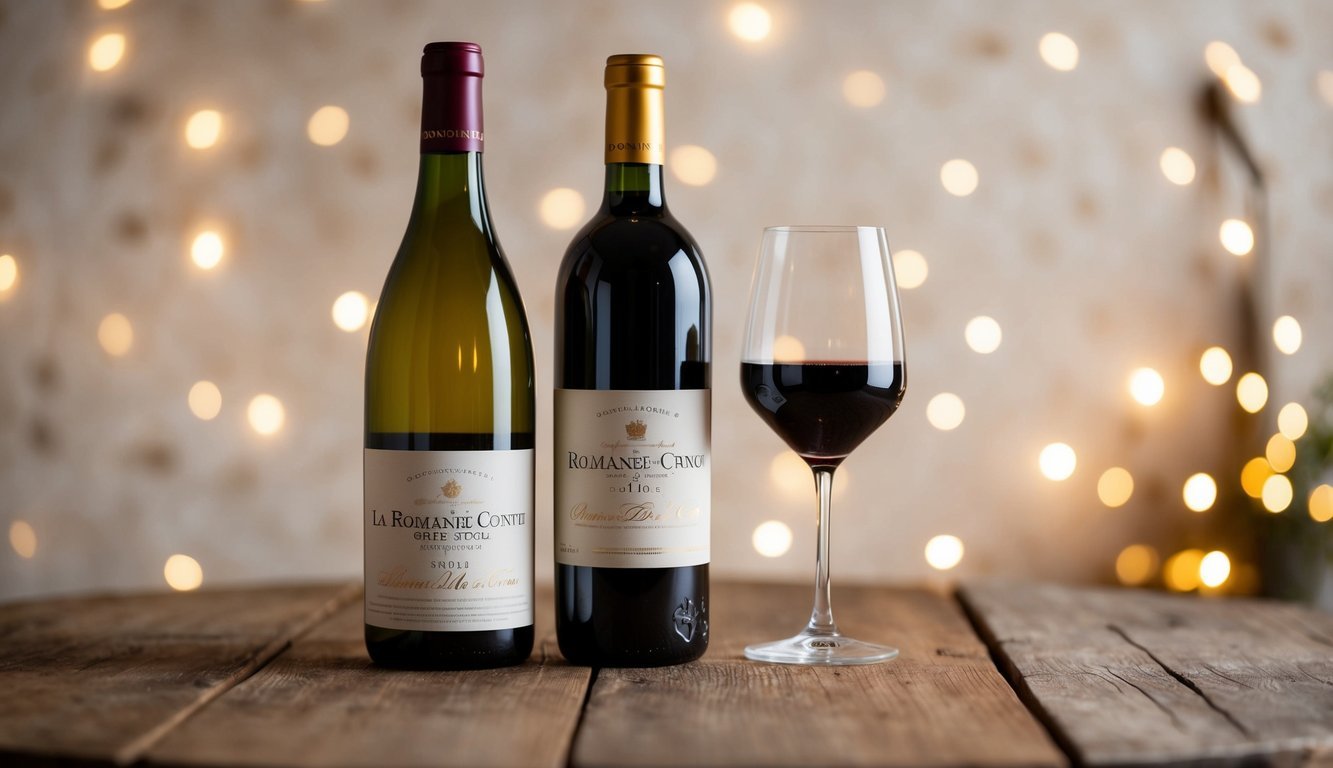
You might need to sell a kidney to afford this wine.
The 2018 Domaine de la Romanée-Conti Grand Cru comes with an eye-watering average price of $26,116 per bottle.
Yes, you read that right.
This legendary Burgundy hails from a tiny 1.81-hectare plot, producing a mere 5,000-6,000 bottles annually.
It’s the crown jewel of DRC’s lineup and arguably the most celebrated wine in the world.
What makes it so special? Picture intense, brooding flavors with mind-boggling complexity.
A silky texture that caresses your palate.
And a finish that seems to last for days.
But let’s be real – unless you’ve just won the lottery, this wine is probably staying on your bucket list.
Fear not, though! There are plenty of delicious Burgundies that won’t require a second mortgage.
Try exploring some lesser-known villages in the Côte de Nuits.
You might find a hidden gem that gives you a taste of that Burgundian magic without breaking the bank.
4) Barefoot Cabernet Sauvignon
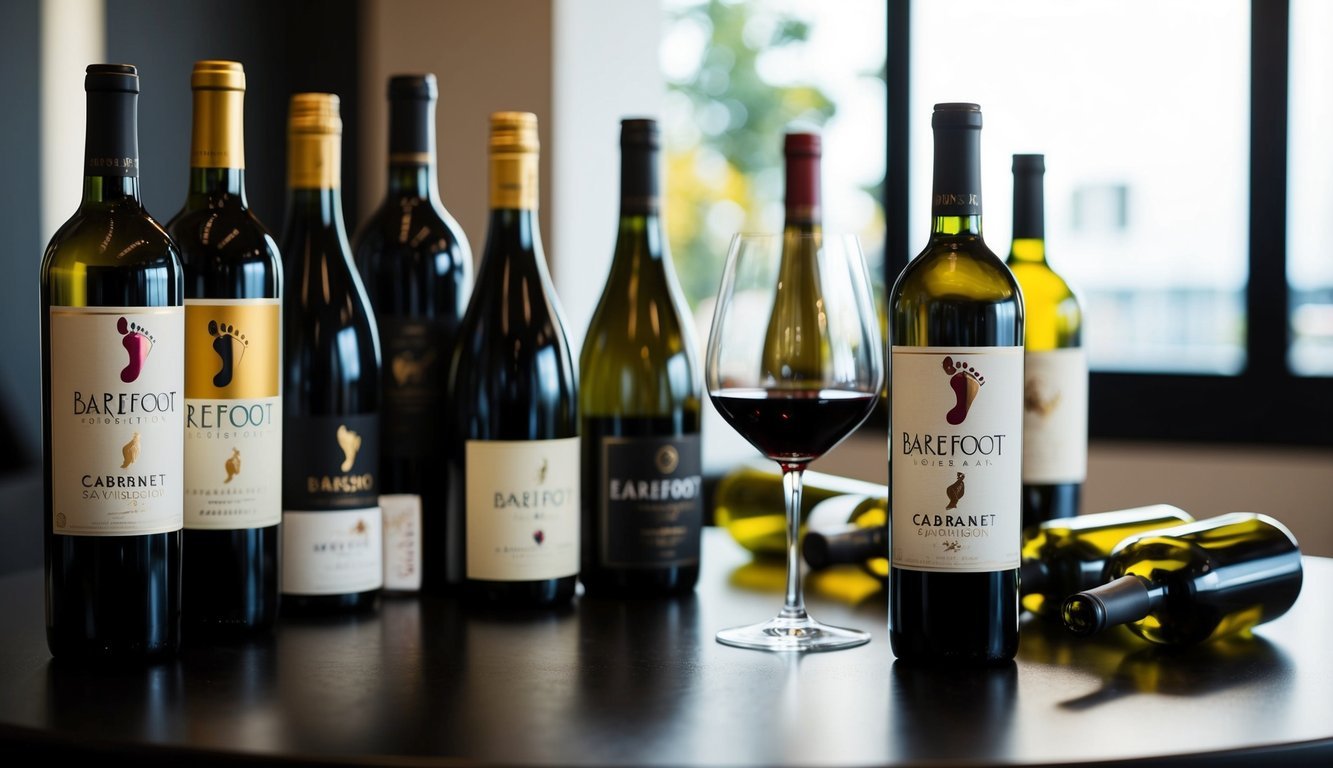
Looking for a budget-friendly Cabernet Sauvignon? Barefoot’s offering might be just what you need.
This wallet-friendly wine packs a fruity punch without breaking the bank.
When you pour a glass, you’ll notice its opaque red color.
It’s not as dark as some other Cabs, but don’t let that fool you.
The wine forms thick, evenly spaced legs on the glass.
On the palate, Barefoot Cabernet Sauvignon is smooth and dry.
It boasts mild tannins and bright acidity, giving it enough structure to stand on its own.
You’ll taste ripe red fruits, making it a jammy and approachable option.
At around $5.99 for a 750ml bottle, it’s hard to beat this price point.
You can even snag a 1.5L bottle for about $10.99 if you’re hosting a gathering.
Pair it with a simple cheddar cheese for a tasty combination.
Or, try it as a casual sipping wine after a hearty meal.
It’s versatile enough to please most palates without the hefty price tag of premium Cabernets.
5) Screaming Eagle Cabernet Sauvignon, 2010
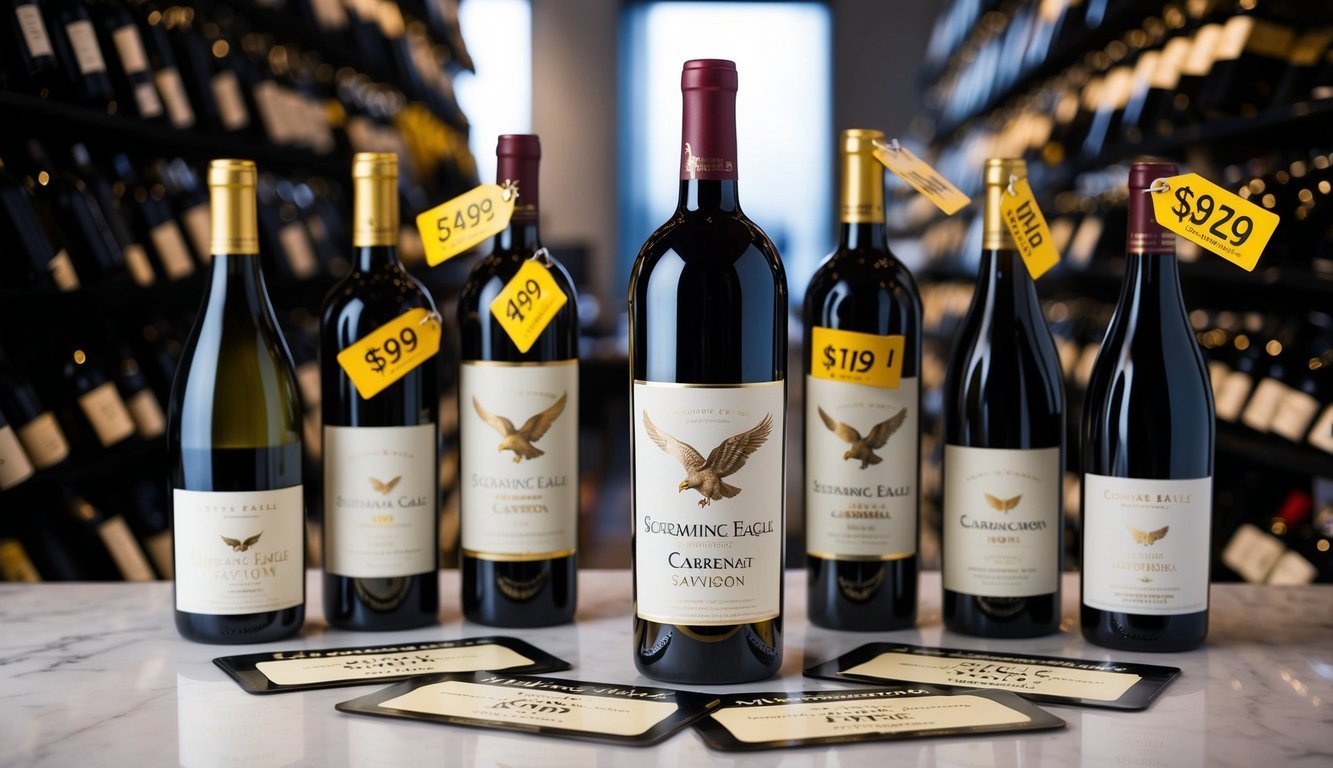
You might need to sell a kidney to afford this legendary Napa Valley wine.
The 2010 Screaming Eagle Cabernet Sauvignon is the epitome of luxury, with prices soaring above $3,800 per bottle.
This vintage earned a perfect 100-point score from wine critic Robert Parker.
It’s known for its intense flavors of black cherry, chocolate, and blackberry, with a depth that some say you could eat with a spoon.
Despite its hefty price tag, Screaming Eagle’s popularity continues to grow.
The 2010 vintage is particularly prized for its power and complexity.
If you’re not ready to empty your savings account, consider exploring other Napa Valley Cabernets.
Look for wines from lesser-known producers in Oakville for a taste of the region without the cult wine markup.
Remember, while Screaming Eagle is undoubtedly special, there are plenty of excellent Cabernets available at more budget-friendly prices.
You can still enjoy top-notch Napa Valley wines without breaking the bank.
6) Trader Joe’s Charles Shaw Shiraz
You’ve probably heard of “Two-Buck Chuck,” the nickname for Charles Shaw wines sold at Trader Joe’s. While the price has crept up a bit, it’s still an incredible bargain.
The Charles Shaw Shiraz is a standout in their lineup.
This deep red wine offers notes of black fruit, particularly plum, making it a flavorful choice for its price point.
Don’t expect a complex, aged wine here.
But for casual sipping or cooking, it’s hard to beat.
The Shiraz has a fruity aroma with hints of smokiness that add depth to its flavor profile.
You might notice some cork bits in your glass, but don’t let that deter you.
It’s part of the charm of this budget-friendly option.
At around $3 to $4 a bottle, you can stock up without breaking the bank.
It’s perfect for parties or weeknight dinners when you want wine without the guilt of opening something pricier.
Remember, wine enjoyment is subjective.
While it may not impress sommeliers, many wine lovers find Charles Shaw Shiraz surprisingly drinkable for its price.
7) Pétrus, 2016

Prepare to be amazed by the opulent Pétrus 2016.
This Pomerol masterpiece boasts an eye-watering price tag that’ll make your wallet weep.
But what’s all the fuss about?
Pétrus 2016 is a sensory delight.
Picture deep purple hues and enticing aromas of ripe black fruits, violets, and dark chocolate.
On the palate, it’s silky smooth with generous tannins and juicy flavors.
Wine critics are head over heels for this vintage.
Perfect 100-point scores have been thrown around like confetti.
They rave about its complexity, structure, and aging potential.
But let’s face it, unless you’ve got a spare $5,000 lying around, this wine is probably out of reach.
Fear not, fellow broke wine lovers! There are alternatives that won’t require a second mortgage.
Try exploring other Merlot-based wines from Pomerol or nearby Saint-Émilion.
You’ll find similarly lush, fruit-forward styles at a fraction of the cost.
Look for wines from lesser-known producers in these regions for the best value.
8) Franzia Sunset Blush
Looking for a budget-friendly wine that won’t break the bank? Say hello to Franzia Sunset Blush.
This boxed wine favorite offers a delicate pink hue and refreshing strawberry flavors that’ll make your taste buds dance.
Perfect for casual gatherings or a relaxing night in, Sunset Blush is easy to drink and pairs well with lighter foods.
You’ll love how it stays fresh for up to 6 weeks after opening, thanks to its convenient bag-in-box packaging.
Want to make a splash at your next summer BBQ? Franzia’s got you covered with their limited-edition Sunset Blush Box and matching merch collection.
From beach bags to swimwear, you can show up in style and turn heads.
At just $4.24 on average, this semi-sweet blush wine is a steal.
It’s an excellent alternative to pricier rosés, giving you that same summery vibe without emptying your wallet.
So next time you’re browsing the wine aisle, don’t be afraid to grab a box of Franzia Sunset Blush.
Your wallet will thank you, and your friends might just be impressed by your savvy wine selection.
9) Penfolds Grange, 2014
Penfolds Grange 2014 is the epitome of luxurious Australian wines.
This Shiraz-dominated blend showcases the pinnacle of winemaking expertise and commands a jaw-dropping price tag of around $900 per bottle.
You’ll find an explosion of aromas in this vintage, from plum and mocha to coffee and black olive.
The palate is powerful yet silky, with American oak subtly complementing the fruit flavors.
Critics have raved about the 2014 Grange, with many expert reviews scoring it at least 97 out of 100.
It’s a cellar-worthy wine that will continue to evolve and improve for decades.
But most of us can’t justify dropping nearly a grand on a single bottle.
So what’s a broke wine lover to do? Look for other premium Australian Shiraz blends that won’t break the bank.
Try exploring wines from the Barossa Valley or McLaren Vale regions.
You might find some hidden gems that offer similar complexity and depth at a fraction of the price.
Remember, wine enjoyment is subjective.
While Grange is undoubtedly exceptional, you can still find fantastic wines that suit your palate and budget with a bit of exploration.
10) Bogle Petite Sirah

Looking for a rich, full-bodied red that won’t break the bank? Bogle Petite Sirah might be your new go-to.
This California wine packs a punch with its intense flavors and aromatic profile.
You’ll be greeted by enticing aromas of blackberry, dark plum, and a hint of vanilla.
As you sip, you’ll discover a medley of flavors including huckleberry jam, black tea, and grilled orange zest.
Don’t let the affordable price tag fool you.
Bogle Petite Sirah offers impressive structure and a long finish that rivals pricier bottles.
It’s a dry wine with 13.5% alcohol content, perfect for those who enjoy bold reds.
Want to impress your friends at your next dinner party? Pair this wine with smoked brisket for a match made in heaven.
The smoky flavors of the meat complement the wine’s rich profile beautifully.
Bogle ages their Petite Sirah in American oak barrels for one year, giving it those lovely hints of vanilla and spice.
It’s a testament to the fact that you don’t need to spend a fortune to enjoy a well-crafted wine.
Understanding Wine Pricing
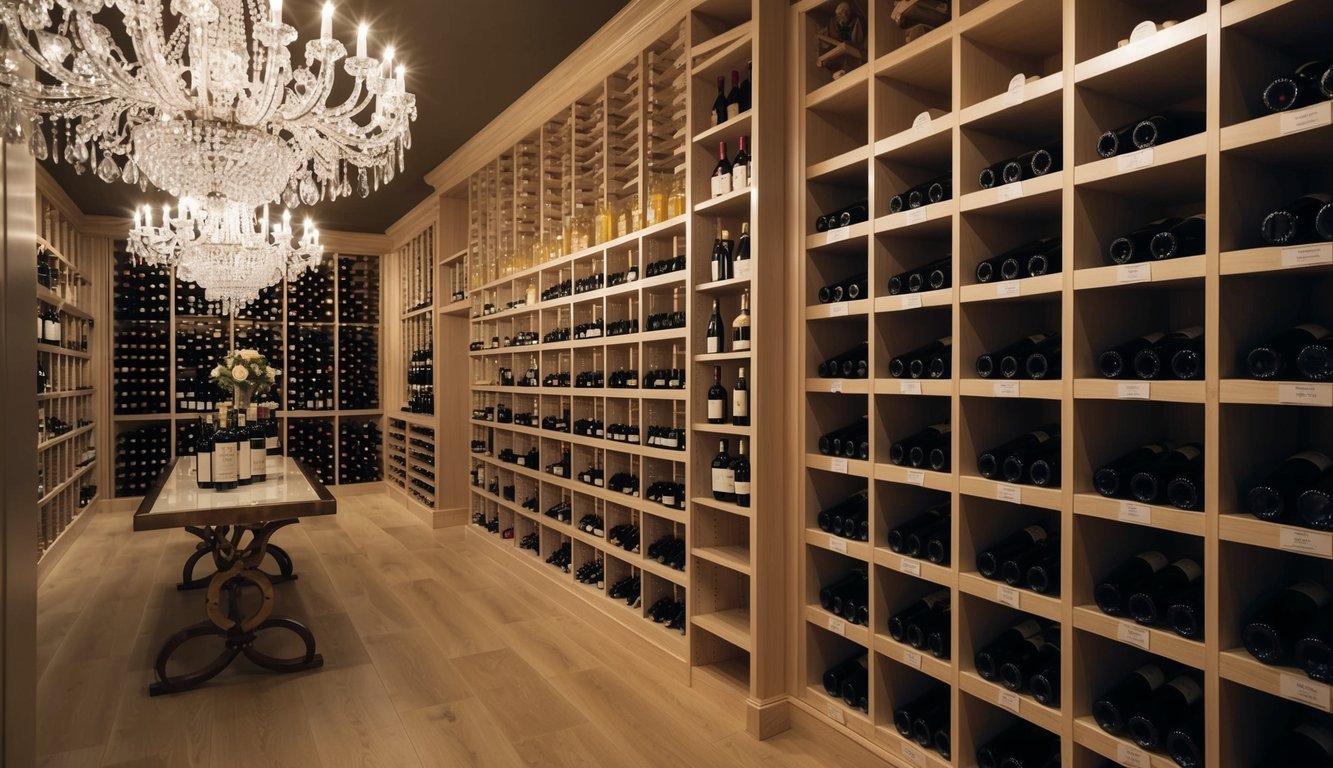
Wine pricing can be confusing and seemingly arbitrary.
The cost of a bottle depends on multiple factors beyond just the quality of the liquid inside.
What Makes Wines Expensive?
Production costs play a major role in wine pricing.
Higher-quality grapes from prestigious vineyards command premium prices.
Careful hand-harvesting and sorting add labor costs.
Oak barrels for aging aren’t cheap either, especially new French oak.
Low-yield vineyards produce more concentrated grapes but less volume to sell.
Some regions have strict regulations limiting production, driving up scarcity and prices.
Think Champagne or Burgundy.
Weather can impact grape quality and quantity year to year.
Bad vintages may mean less wine to sell or higher costs to produce decent wine.
Marketing and Prestige
Brand recognition and reputation factor heavily into pricing, especially for luxury wines.
You’re often paying for the name on the label.
Top critics’ scores and awards can justify higher prices.
Limited production “cult” wines create buzz and demand.
Fancy bottles, labels, and packaging add costs passed on to consumers.
So do marketing budgets for ads and sponsorships.
Some wineries simply price high to create an air of exclusivity and luxury.
It’s about status as much as quality.
Exploring Cheeky Alternatives
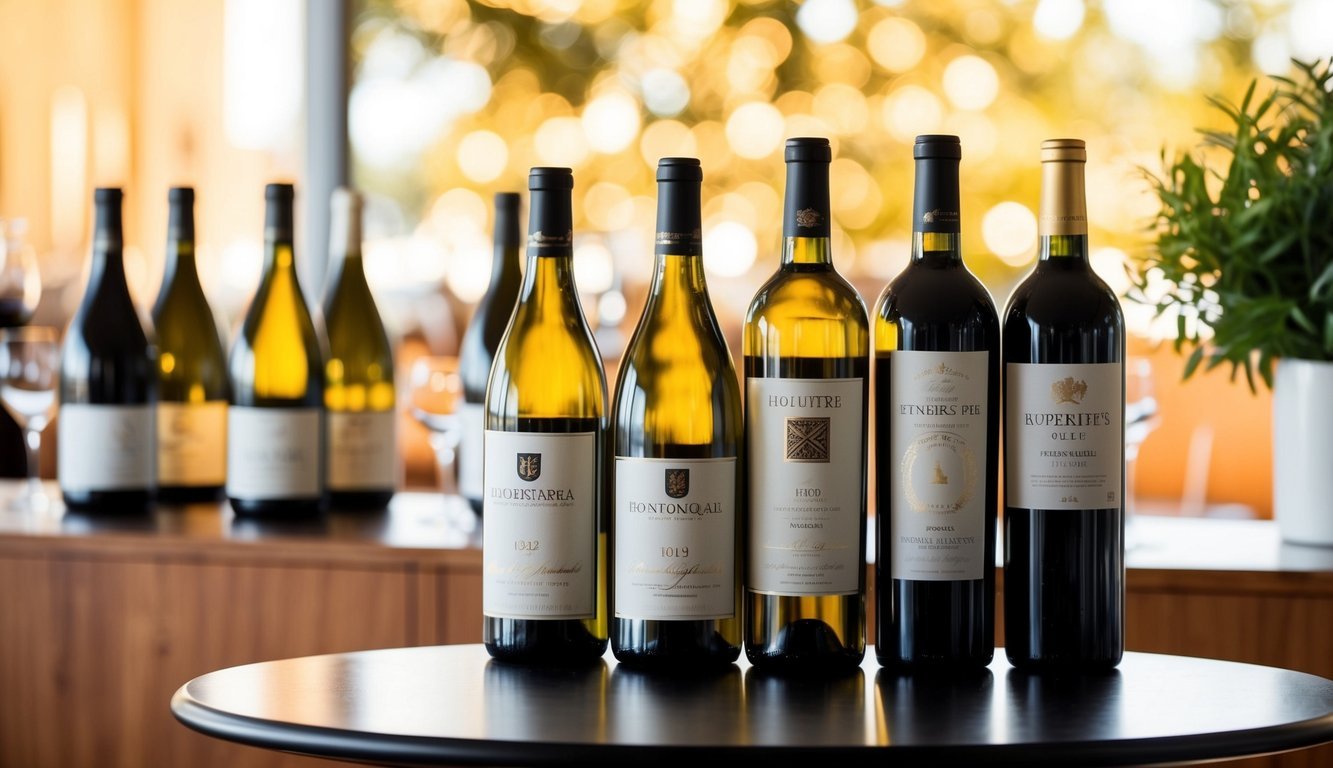
Finding great wines doesn’t have to break the bank.
You can discover fantastic options by looking beyond the big-name regions and producers.
Let’s dive into some clever ways to enjoy top-notch wines without the hefty price tags.
Affordable Regions to Explore
Portugal offers incredible value for wine lovers.
You’ll find robust reds from the Douro Valley at a fraction of the cost of their French counterparts.
Try a Touriga Nacional blend for rich, complex flavors.
Spain’s Ribera del Duero region produces stunning Tempranillo wines.
These offer similar depth to pricey Bordeaux but at much more wallet-friendly prices.
For white wine fans, look to Greece.
Assyrtiko from Santorini delivers crisp, mineral-driven wines that rival high-end Chablis.
The Rise of Boutique Wineries
Small, independent wineries often produce exceptional wines without the markup of famous labels.
Seek out family-run operations in California’s lesser-known regions like Paso Robles or Lodi.
New York’s Finger Lakes region is a hotbed for innovative winemakers.
You’ll find world-class Rieslings and cool-climate reds at surprisingly accessible prices.
In Australia, boutique producers in Margaret River are crafting Cabernet Sauvignon and Chardonnay that compete with Napa’s finest.
These gems often fly under the radar, offering great value for savvy buyers.
Tasting Tips for Wine Lovers
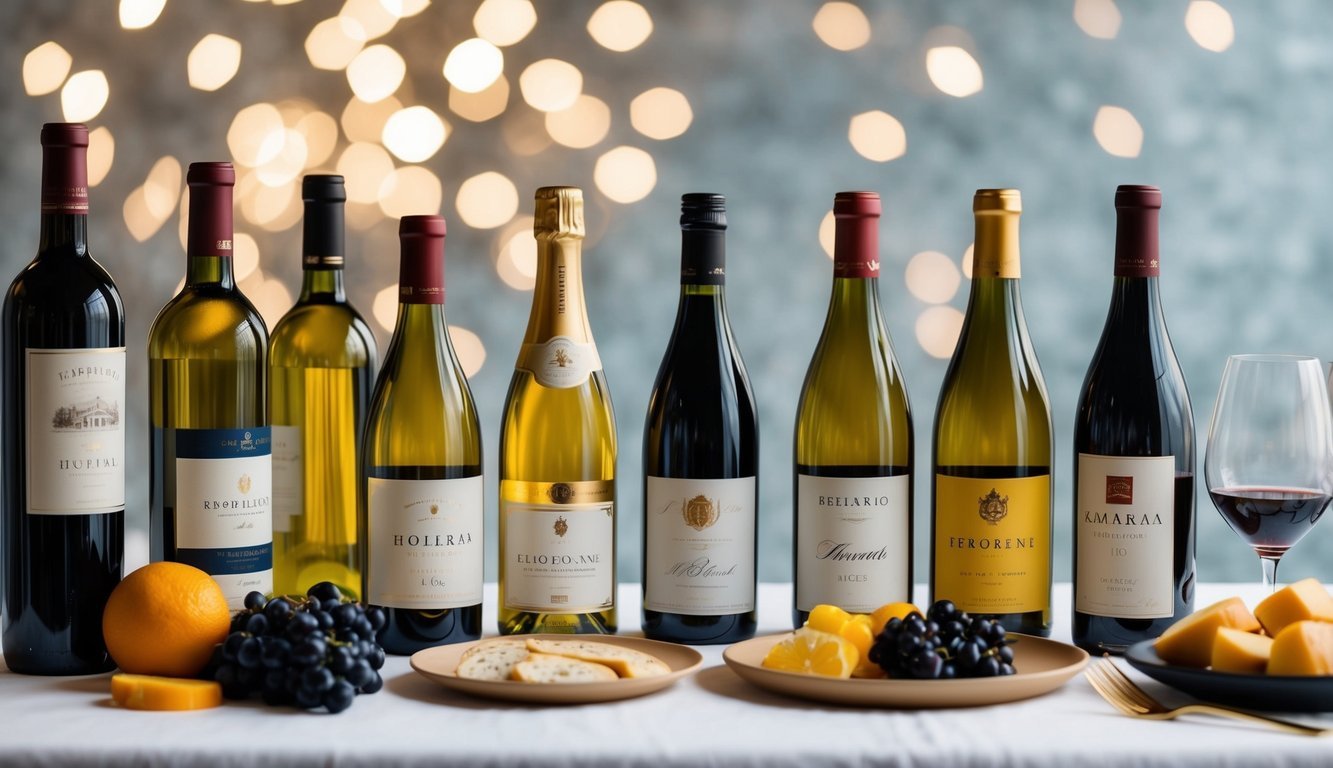
Mastering wine tasting doesn’t require deep pockets.
With a few simple techniques, you can enhance your palate and host fun tastings without breaking the bank.
Developing Your Palate
Start by focusing on one aspect of the wine at a time.
Look at the color – is it deep red, pale yellow, or blush pink? Swirl the glass and take a sniff.
What aromas do you pick up? Fruit, flowers, spices?
Take a small sip and let it coat your mouth.
Pay attention to the flavors, acidity, and tannins.
Does it taste sweet, dry, or somewhere in between?
Practice describing what you taste.
Keep it simple at first – “fruity,” “earthy,” or “crisp” are great starting points.
As you taste more wines, you’ll build a broader vocabulary.
Try comparing similar wines side by side.
This helps highlight subtle differences and trains your palate to pick up nuances.
Hosting Affordable Tastings
Gather a group of friends and have everyone bring a bottle within a set price range.
This spreads the cost and introduces variety.
Choose a theme like “Wines Under $15” or “Hidden Gem Regions.” It adds fun and helps you discover new favorites.
Provide simple snacks like bread, cheese, and fruit.
They cleanse the palate and prevent empty stomachs.
Use regular wine glasses instead of specialty ones.
Clean jars work in a pinch too.
Cover bottle labels for blind tasting.
This way, you can challenge assumptions and focus on what’s in the glass.

